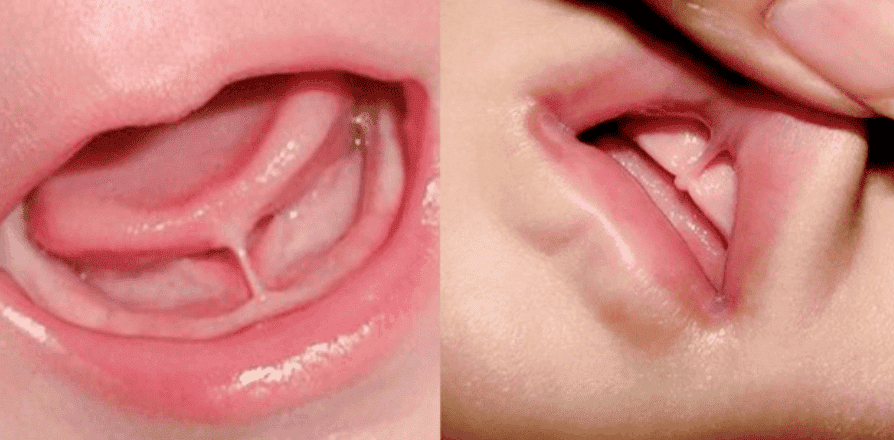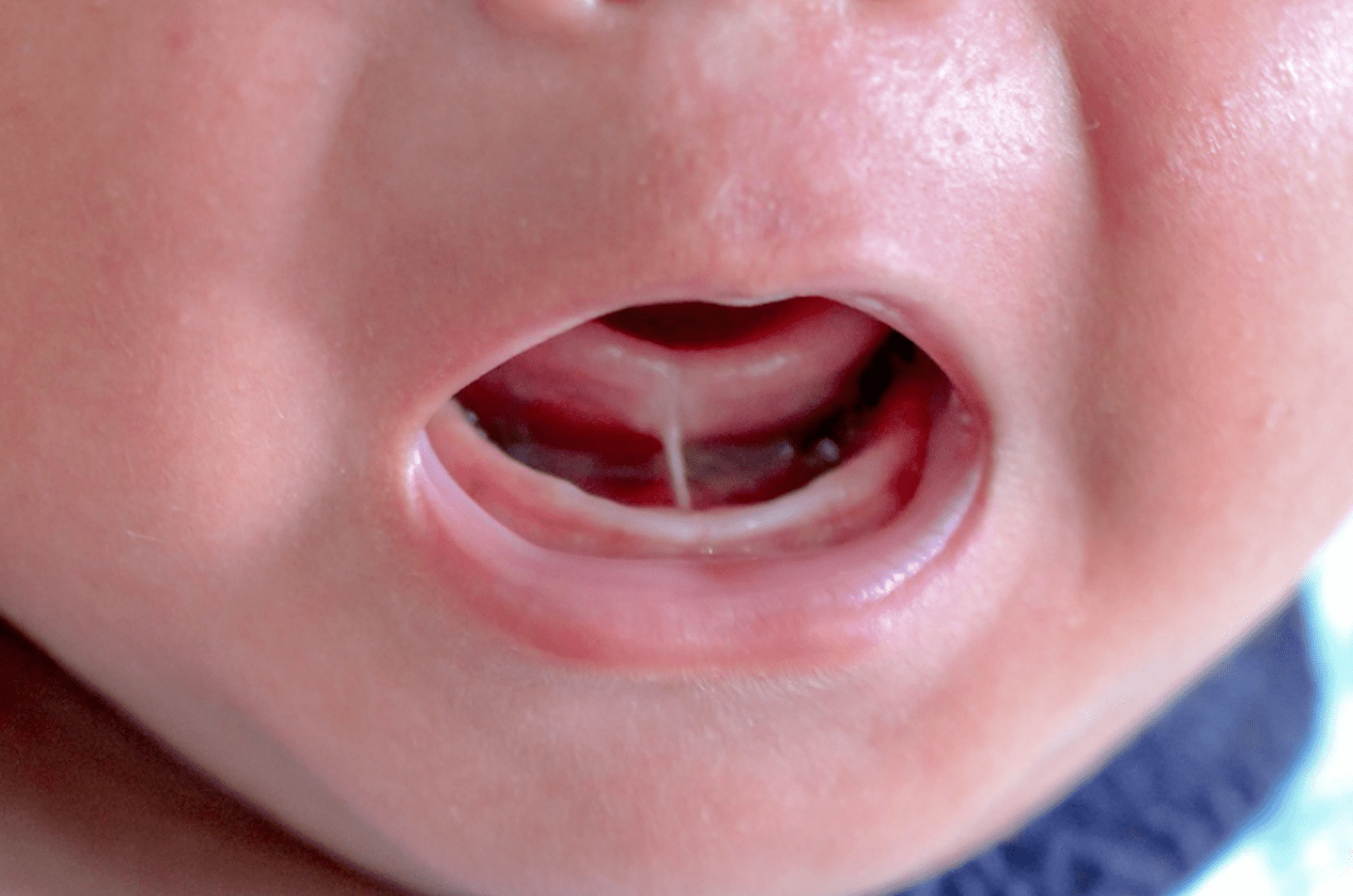

Lip Tie and Tongue Tie
Do you ever feel like your baby can’t seem to latch on properly when breastfeeding? Or maybe they’re having trouble sticking their tongue out? Chances are, they may have a lip or tongue tie. In this blog post, we will discuss lip and tongue ties and how to deal with them.
Lip and tongue tie are two conditions that can cause difficulties with breastfeeding/latching. Both lip tie or tongue tie involve a shortening of the muscles that attach the upper lip or tongue to the gums. This can cause difficulties with latching on, as well as problems with milk transfer.
Tong and lip tie can both be corrected with surgery, which is often covered by insurance. In some cases, a different method of feeding, such as pumping, may be recommended. If you are experiencing difficulties breastfeeding, talk to your doctor about whether a lip or tongue tie may be the cause.
Lip Tie and Tongue Tie

According to the Mayo Clinic, “Lip or tongue tie are birth defects that can make it difficult to breastfeed. A lip tie or tong tie is a condition in which the tissue connecting the upper lip to the gum is too thick or tight. Tongue tie is a condition in which the tissue connecting the tongue to the floor of the mouth is too thick or tight.” If you have a baby with either of these conditions, don’t worry, there are treatments available.
A simple and quick procedure called a Frenectomy can be performed by a doctor to release the ties. This will make breastfeeding much easier for both you and your baby. So, if you are having difficulty breastfeeding, be sure to ask your doctor about lip ties and tongue ties.
When a baby is born, their mouths are often tightly shut. This is perfectly normal, and usually resolves itself within the first few days of life.
Signs of tongue-tie

Tongue-tie, also called ankyloglossia, The most common symptoms of tongue-tie include:
* Difficulty sticking out the tongue past the gum line
* Difficulty moving the tongue from side to side
* Difficulty lifting the tongue to touch the roof of the mouth
* A heart-shaped tongue
*Difficulty latching
Try to use more paragraphs. Ideally, you should use at least 17 paragraphs.Try to use more paragraphs. Ideally, you should use at least 17 paragraphs.
If you suspect your child may have tongue tie, it is important to seek medical attention so that treatment can be started if necessary. Early intervention can help to prevent problems with breastfeeding, speech, and oral hygiene later on.
Tongue-tie

Tongue-tie, also known as ankyloglossia, as mentioned above is a condition in which the tongue is tethered to the floor of the mouth by a tight band of tissue. This can make it difficult or impossible to move the tongue freely. Tongue-tie can occur in both children and adults, and it is more common in males than females.
While tongue-tie does not usually cause any medical problems, it can interfere with breastfeeding, speaking, and eating. If tongue-tie is causing difficulty with these activities, treatment is typically recommended. The most common treatment for tongue-tie is a procedure called frenectomy, in which the tethering tissue is clipped. This simple procedure is usually very effective in improving tongue function.
Signs of lip tie

Lip tie is a condition where there is an abnormal attachment of the tissues that connect the upper lip to the gums. This can cause a number of symptoms, including difficulty breastfeeding, frequent drooling, and speech problems. Some people may also experience pain or discomfort around their mouth.
Signs of lip tie can include redness or inflammation around the corners of the mouth, a furrowed appearance on the upper lip, and inability to move the upper lip freely. In some cases, there may also be visible scar tissue in this area.
If you suspect that you have a lip tie, it is important to seek medical advice right away. Your doctor can perform a physical exam and may order some tests to help determine the underlying cause of your symptoms. Treatment for lip or tong tie usually involves surgical intervention, although non-surgical options may be available in some cases as well.
Lip Tie
Lip tie is a condition in which the strip of skin that connects the upper lip to the gum is too thick or too tight. This can cause problems with breastfeeding, as it can make it difficult for the baby to latch on properly. Lip tie can also cause difficulty with speech and may lead to an increase in drooling. In some cases, lip tie may also cause teeth to become misaligned.
While lip tie is relatively common, it is often not diagnosed until after difficulties with breastfeeding have already arisen. Treatment for lip tie typically involves a simple procedure to release the tissue that is causing the problem. In most cases, this can be done quickly and easily, with little discomfort for the baby. However, if left untreated, lip tie can cause lasting problems for both mother and child
how to diagnose tongue tied

There are several different methods that can be used to diagnose tongue tied, or ankyloglossia. The first step is typically to take a look at the lingual frenulum, which is the thin membrane that connects the underside of the tongue to the floor of the mouth. Doctors may use a tool called a Wilson blade to gently lift and inspect this membrane for signs of restriction or tightness.
Another common diagnostic method is to perform a physical exam, looking for signs of restricted movement in the tongue and examining its shape and size. This can often help determine whether or not an infant has tongue tie, as newborns may have difficulty breastfeeding due to the condition.
In some cases, doctors may also use additional diagnostic tools such as specialized ultrasound or laser devices, which allow them to visualize the structure of the tongue and assess any possible restrictions or abnormalities. Overall, there are many different approaches that can be used when diagnosing tongue tie in order to get an accurate picture of a patient’s condition and recommend an appropriate treatment plan.
how to diagnose lip tied
The first step in diagnosing a lip tie is to look for signs of breastfeeding difficulty and/or abnormal sucking patterns. This can often be detected by a lactation consultant or pediatrician who has experience with lip ties. Some common symptoms of a lip tie include problems with breastfeeding, such as excessive nipple soreness, poor milk transfer, or low milk supply.
In addition to looking for these physical signs, you may also want to consider using certain diagnostic tools, such as a Saliva Test or a Frenulometer measuring system. These tools are designed to measure the mobility and tension of the muscles and tissues that connect your lips to your gums. Once these measurements are taken, they can be compared against standard values to determine whether or not you have a lip tie that should be treated.
If you suspect that you may have a lip tie, it is important to seek medical attention as soon as possible. Treatment options will vary depending on the severity of your condition and the potential side effects associated with different treatment approaches. However, most treatment methods are fairly simple and involve either releasing the lip tie through surgery or stretching it out over time using specialized equipment and techniques. With proper diagnosis and treatment, you can successfully address any issues related to your lip tie and get back to enjoying all aspects of life without discomfort or frustration.
What problem can a Tongue or lip tie cause?

A Tongue-tie, or Ankyloglossia, is a condition in which the tongue is tethered to the floor of the mouth by a short, thick strip of tissue. This can cause difficulty with eating, speaking, and even breathing. In severe cases, a tongue-tie can lead to choking and problems with swallowing. Tongue-ties are also associated with an increased risk of tooth decay and gum disease. For mother’s, tongue-ties can cause pain and difficulties with breastfeeding. The baby may have difficulty latching on to the nipple, or may fall off the breast frequently. This can lead to cracked nipples, engorgement, and even mastitis. Mothers who are struggling to breastfeed should talk to their doctor or lactation consultant about whether their baby’s tongue-tie may be contributing to the problem.
Lip Tie and Tongue Tie procedure
The lip tie and tongue tie procedure is a type of surgery that is used to correct problems with the upper lip or tongue that are caused by an abnormal attachment of the frenulum, a thin band of tissue under the upper lip or tongue. This procedure involves cutting this attachment in order to release the lip or tongue so that it can move freely.
There are several different techniques that may be used during a lip tie and tongue tie procedure, depending on the specific condition being treated. Some procedures involve making small incisions directly in the frenulum and then cutting it, while other procedures involve making a larger incision and then separating the frenulum from its attachment on either side.
After a lip tie and tongue tie procedure, patients may experience some swelling, bruising, or pain in the area where surgery was performed. These symptoms typically go away within a few days, after which patients can generally resume their normal activities without any limitations. It is important to follow any post-operative instructions your doctor gives you in order to ensure a smooth recovery from this procedure.
Lip Tie and Tongue Tie procedure recovery
Recovery from lip and tongue tie procedures is generally relatively quick, and it typically involves only a few days of downtime while the baby heals. During this time, parents will need to be especially attentive to their child’s oral hygiene, making sure to regularly clean the area around the surgical site to prevent infection.
In addition to cleaning and monitoring the surgical site, parents will also need to closely monitor any changes in their baby’s behavior or eating habits after the procedure. It is important to remain vigilant for signs of complications, such as increased pain or trouble breastfeeding.
If any issues do arise after lip and tongue tie surgery, parents should speak with their child’s doctor right away in order to get appropriate treatment and care. With close monitoring and proper care, most babies will make a full recovery from these procedures without any lasting effects or complications.
Conclusion
As a mother of a baby who was diagnosed with lip tie/tongue tie and had to go through a frenectomy hope that this blog post was informative and helpful if you have to deal with your baby’s lip and tong tie.


